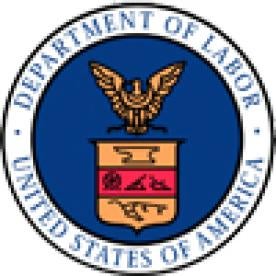For months, employers have been anxiously awaiting the Department of Labor’s (DOL’s) final rule on exemptions from overtime under the Fair Labor Standards Act (FLSA) and wondering whether the DOL would pass the rule as previously proposed or make modifications to its June 2015 proposed rule. Now the wait is finally over and, as anticipated, the DOL’s final rule(which will be published in the Federal Register today) contains some significant changes for employers with salaried workers. Notably, this rule is only one of many new regulations that the President’s Administration pushed through by May 23, 2016 in order to ensure they take effect before President Obama’s term ends in January 2017. Below are several highlights of the final rule change, along with strategies employers should consider before the rule changes take effect.
What Does The Final Rule Change?
-
New minimum salary thresholds: As expected, the final rule, which becomes effective on December 1, 2016, more than doubles the minimum salary required to be exempt from overtime requirements under the FLSA’s executive, administrative, professional, outside sales, and computer employee exemptions. Specifically, the final rule establishes $47,476 (up from $23,360) as the new minimum salary required for these exemptions, which corresponds to the 40th percentile of weekly earnings for full-time salaried workers in the lowest income region in the United States. The $47,476 minimum salary threshold is a decrease of approximately $3,000 from the proposed $50,440 minimum salary contained in DOL’s proposed rule. However, even with this decrease, approximately 35 percent of current full-time salaried workers are expected to become automatically entitled to overtime absent changes to their existing salaries.
In addition to the increase in the standard salary threshold, the final rule also provides for a significant increase in the minimum salary required to satisfy the highly compensated employee (HCE) exemption. The new salary threshold for highly compensated employees will increase to $134,004 per year (up from $100,000 per year) and corresponds to the 90th percentile of full-time earnings nationwide.
-
Automatic increases to the minimum salary thresholds: For the first time ever, the final rule provides for the minimum salary thresholds to automatically be increased every three years to take into account increases in the costs of living and to ensure that the minimum salary thresholds stay at the 40th and 90th percentile levels for the lowest income region in the United States. While these periodic increases are better for employers than the annual increases referenced in DOL’s proposed rule, early estimates indicate that employers will be forced to pay salaries of more than $51,000 to maintain exempt status under the executive, administrative, professional, outside sales, and computer employee exemptions when the first salary increase takes effect in January 2020. For employees who are exempt under the highly compensated employee exemption, this threshold is likely to rise to more than $147,000 by the time of the first increase. The DOL will post the new salary thresholds at least 150 days in advance of their effective date, beginning in August 2019.
-
10 percent rule for bonuses, incentive payments, and commissions: In response to numerous comments from the business community, the final rule allows up to 10 percent of the non-HCE salary to be satisfied by nondiscretionary bonuses, incentive payments, or commissions so long as those payments are made on at least a quarterly basis. However, the value of other fringe benefits, such as health insurance, still cannot be counted toward the salary threshold.
What Has Not Changed?
-
FLSA coverage: The final rule does not modify the requirements for coverage under the FLSA and continues to apply to (1) businesses or similar entities (enterprise coverage) and (2) individuals (individual coverage). With respect to enterprise coverage, the FLSA, including its overtime requirements, generally applies to businesses or similar entities that have sales or business of at least $500,000 per year, plus certain “named enterprises” which are covered regardless of their annual sales or business and regardless of their nonprofit status (e.g., hospitals, schools and preschools, government agencies, businesses providing medical, or nursing care for residents). In the case of other nonprofits which are not named enterprises, coverage is based only on activities they perform for a business purposes and does not include the organization’s charitable activities. Likewise, income from donations, membership fees, dues, and other contributions used for charitable activities are not counted toward the FLSA’s $500,000 enterprise threshold. Finally, certain employees may be entitled to FLSA protection under individual coverage, even if their nonprofit employer is not covered under enterprise coverage, if the employee is engaging in interstate commerce or the production of goods for interstate commerce. The DOL has issued specific guidance for nonprofit employers, which reiterates that there is no exemption for nonprofits under the FLSA and that any nonprofits that engage in significant commercial activities or that employ workers who engage in interstate commerce (by making out-of-state phone calls or sending or receiving mail, for example) must comply with minimum wage and overtime requirements.
-
Exempt duties tests: To the relief of many employers, the final rule also does not contain any changes to the duties tests for exempt status. Therefore, employers will continue to use the same duties tests to evaluate whether or not a position is exempt or nonexempt from overtime. Further, employees who are properly classified as exempt under the existing salary threshold will remain exempt after December 1 as long as they earn at least $47,476 (or $134,004 for HCE’s) per year.
-
Fluctuating workweek method still available: Under the final rule, the fluctuating workweek method of calculating hours of work is still available and employer are allowed to continue to pay a fixed salary that covers a fluctuating number of hours at straight time if there is a clear, mutual understanding between the employer and employee regarding the salary and certain other conditions are met.
-
Certain exemptions not affected: Finally, the rule does not change the exemption for commissioned sales employees in retail and service establishments who must continue to be paid one-and-a-half times the minimum wage for all hours worked and receive a majority of their earnings in commissions. Certain other exemptions also remain unchanged by the final rule.
Impact of the Final Rule
The final rule is expected to have an enormous impact on employers. According to the DOL’s fact sheet on the final rule, it will affect 4.2 million workers in the United States who are currently classified as exempt but earn less than $47,476 per year. The DOL estimates that employers will convert 4.1 million of these workers to hourly status, so they will be eligible for overtime pay, and that 100,000 of these workers will receive salary increases to satisfy the new minimum thresholds. The agency also estimates that, in the first year alone, the final rule will cost private sector employers $1.8 billion – $1.2 billion in payroll increases and $637.7 million in additional direct costs on employers, such as conducting audits on employees’ exempt status and changing management practices to better track the time employees spend working. These costs will be particularly significant for employers in the retail and restaurant industries, which are likely to employ more lower-paid managers.
Compliance Strategies for Employers
In order to assist employers with compliance, the DOL has published several technical guidance documents containing several options for private employers, nonprofits, and higher education. These options include, but are not limited to the following:
-
Raise salaries to $47,476 per year: For salaried employees who are at or near the new minimum threshold (and assuming employees are properly classified as exempt to begin with), employers can raise salaries for exempt workers to $47,476 per year and continue classifying them as exempt from overtime.
-
Reclassification to nonexempt only: For salaried employees who work 40 hours or less per week and work no overtime, employers can reclassify employees who are below the minimum threshold as nonexempt and make no other changes to hours and pay.
-
Reclassify and pay overtime above existing salary: For salaried employees who work more than 40 hours per week and do not earn at least $47,476 per year, employers may reclassify those employees as salaried nonexempt, have them track their hours worked, and then pay overtime (above and beyond base salary) for any hours worked over 40 hours per week.
-
Reclassify and limit hours and/or divide workloads among multiple employees:Employers may also achieve compliance by reclassifying affected salaried employees as nonexempt and limiting employees’ hours to no more than 40 hours per week or dividing workloads among multiple full-time or even part-time employees so that employees do not work more than 40 hours per week.
-
Reclassify and adjust wages to account for additional overtime to be paid: Another option is for employers to reclassify affected salaried employees as nonexempt and adjust base wages downward (keeping in mind minimum wage requirements) in order to account for the additional wages that will be paid for overtime. Alternatively, in certain situations, employers and employees may agree to a fixed salary amount to be paid for a fixed number of hours per week.
-
Use of volunteers (nonprofits only): In addition to the above options, certain nonprofit organizations may consider expanding their use of volunteers. However, nothing in the final rule changes the requirements for volunteers, who are generally limited to performing voluntary services for religious, public service, or humanitarian purposes and who perform service without expectation or receipt of compensation.
Next Steps for Employers
In advance of the December 1 deadline, all employers with salaried workers should audit the exempt status and salaries for their employees to ensure compliance with the DOL’s final rule. Any audit should include a review of salaries to ensure that all exempt workers are paid at least the minimum salary required for exemption under the final rule. In addition, employers should use the final rule as an opportunity to closely analyze the job duties of positions about which there are classification concerns in order to ensure that the job duties for those positions satisfy the requirements of the existing duties tests. Employers will then need to work on raising salaries and/or reclassifying any employees who no longer qualify as exempt either due to the increased salary threshold or because they do not satisfy the applicable duties test. We recommend that employers promptly consult with their employment counsel for assistance complying with the DOL’s final rule.




 i
i


